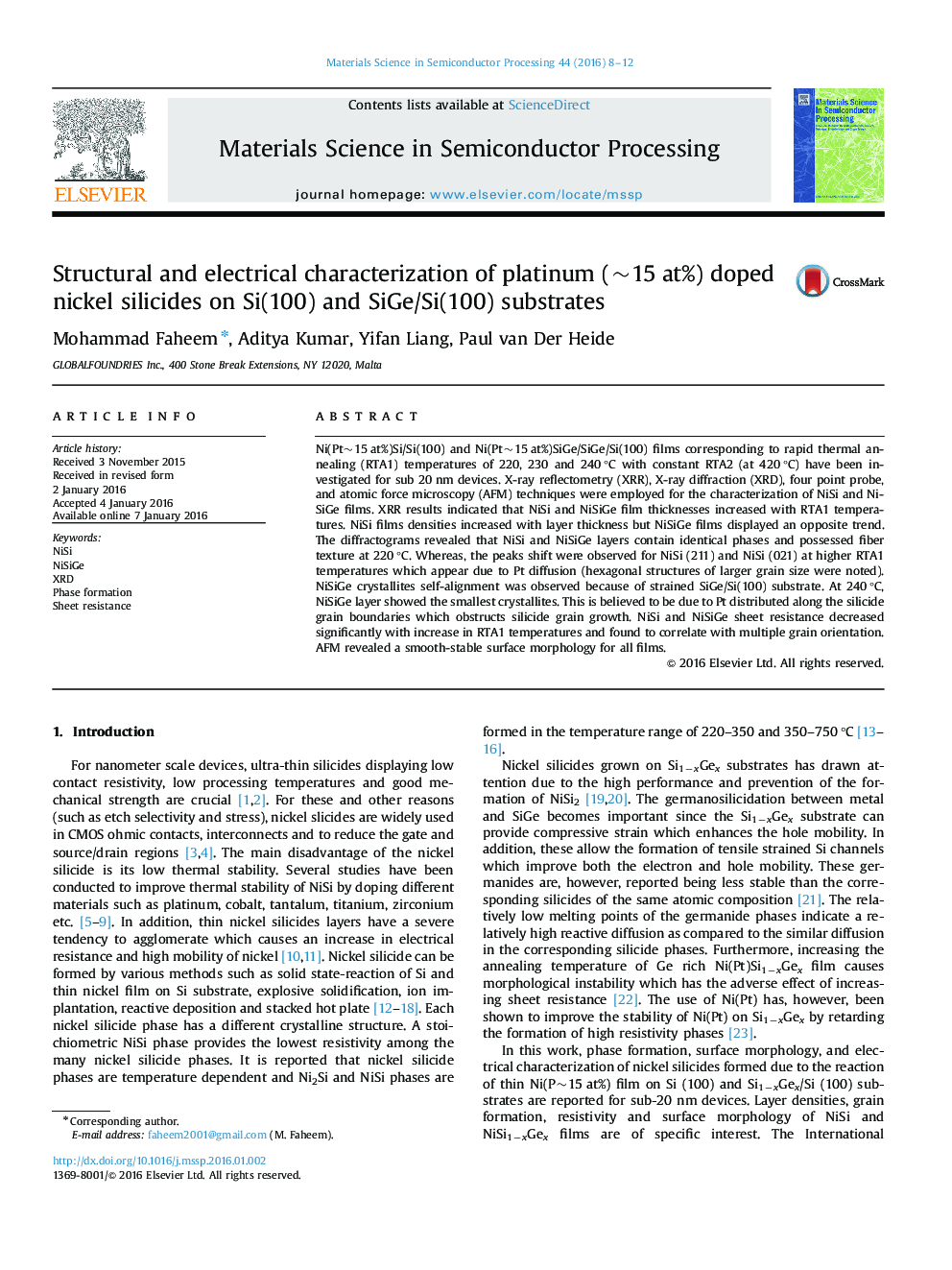| Article ID | Journal | Published Year | Pages | File Type |
|---|---|---|---|---|
| 727803 | Materials Science in Semiconductor Processing | 2016 | 5 Pages |
Ni(Pt~15 at%)Si/Si(100) and Ni(Pt~15 at%)SiGe/SiGe/Si(100) films corresponding to rapid thermal annealing (RTA1) temperatures of 220, 230 and 240 °C with constant RTA2 (at 420 °C) have been investigated for sub 20 nm devices. X-ray reflectometry (XRR), X-ray diffraction (XRD), four point probe, and atomic force microscopy (AFM) techniques were employed for the characterization of NiSi and NiSiGe films. XRR results indicated that NiSi and NiSiGe film thicknesses increased with RTA1 temperatures. NiSi films densities increased with layer thickness but NiSiGe films displayed an opposite trend. The diffractograms revealed that NiSi and NiSiGe layers contain identical phases and possessed fiber texture at 220 °C. Whereas, the peaks shift were observed for NiSi (211) and NiSi (021) at higher RTA1 temperatures which appear due to Pt diffusion (hexagonal structures of larger grain size were noted). NiSiGe crystallites self-alignment was observed because of strained SiGe/Si(100) substrate. At 240 °C, NiSiGe layer showed the smallest crystallites. This is believed to be due to Pt distributed along the silicide grain boundaries which obstructs silicide grain growth. NiSi and NiSiGe sheet resistance decreased significantly with increase in RTA1 temperatures and found to correlate with multiple grain orientation. AFM revealed a smooth-stable surface morphology for all films.
